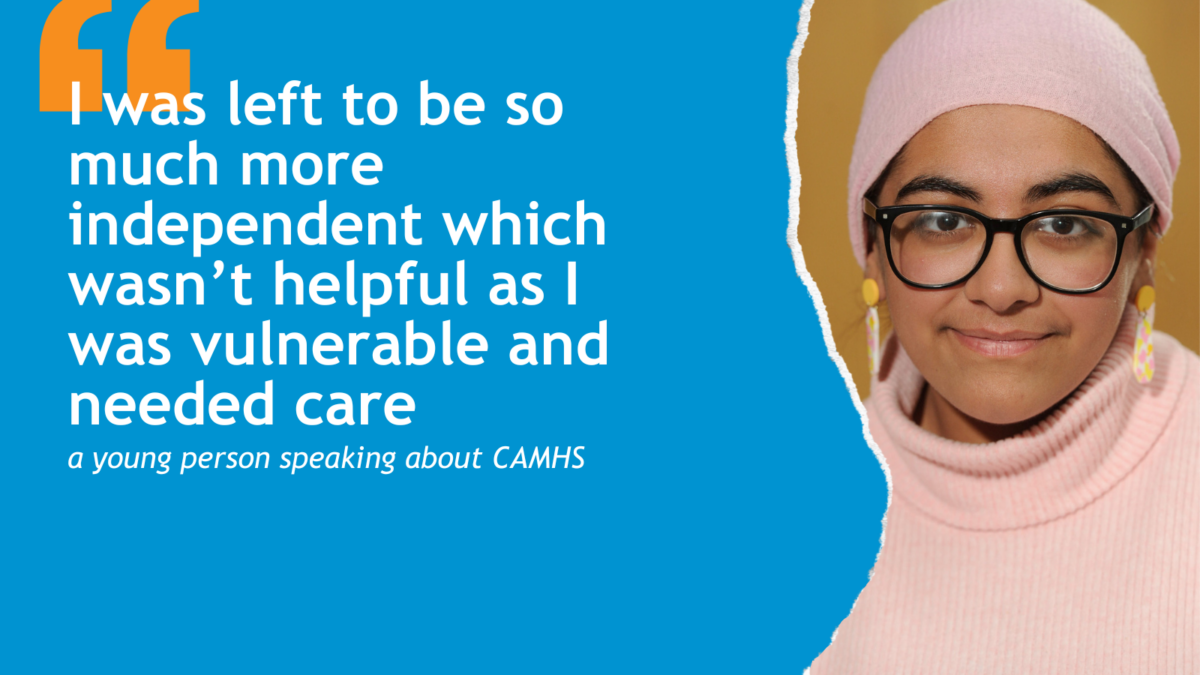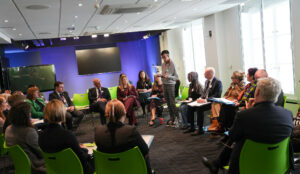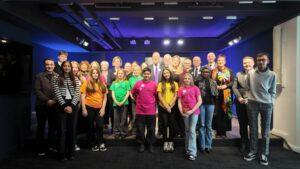What is a transition?
‘a process of changing from one system, method, etc. to another’ (Transition, 2022)
Change is a natural and inevitable part of life, it may be uncomfortable or we may love it (or hate it!), but we face different changes and transitions each day. From something as simple as changing up the clothes you wear to more significant changes like transitioning from primary school to high school.
Whilst change can be accompanied by tough feelings, we can adapt and find the tools to deal with them. For example, change can be scary, but having a good support network will help. Having someone you trust to talk to, an outlet to share your concerns and worries, and even someone to reassure you everything will be okay.
Not every transition is quite the same; some can be more difficult than others. This blog will look at the transition from Children’s and Adolescent Mental Health services (CAMHS) to Adult Mental Health Services (AMHS).
You might be wondering, what exactly does this transition entail?
The transition to AMHS occurs at around the age of 18, although this can vary with individuals. The purpose of this transition is to give young people more responsibility over their treatment. This means young people can have a different relationship with their mental health team, access to alternative types of support, and there is less input from parents and carers.
This is a scary transition for young people as it comes with many uncertainties. In the past, SYP campaigned for improvements to this transition. As a result, SYP was invited by the Scottish Government and CAMHS in Edinburgh, where MSYPs and a group of volunteers developed the transition care plan (TCP). The TCP is a document that healthcare providers can use to help young people navigate this transition.
It uses a human rights approach to ensure young people are empowered through this transition by sharing details of their lifestyle, current treatments, needs and wants, and concerns and worries. The idea behind this was to improve the quality of support received during this transition, however, based on consultation, it is clear there is more work to be done in this avenue.
What do we know?
In January 2021, I consulted with 134 Young People who had directly experienced this transition, to gather their views on what this transition felt like. I conducted a survey, ran a few social media takeovers, and lead a focus group on the transition from young people across the country, and the results were clear. 80% of young people felt the transition support they received was poor. Young people are struggling; they do not feel they have the support network to help with this transition and they need our help.
To hear it directly from Young People:
- “I was left to be so much more independent which wasn’t helpful as I was vulnerable and needed care”
- “Honestly by being given information or being checked in on could’ve helped because I really had nothing to access- I had been referred to CAMHS for the second time and they wouldn’t take me because I was nearly eighteen, so they just passed me along to AMHS but that was it, there was no other contact or resources or anything.”
- “I wish I felt like someone in adult services actually cared and listened”
- “I was discharged from adult services as I did not meet the criteria for support, more continuation of psychological therapies is needed. Support from CAMHS was great, support from GAP was not good!”
What happened next?
As a result of these heart-breaking statements, I put forward a motion to SYP’s June sitting which stated that:
‘The Scottish Youth Parliament acknowledges the challenges around support and communication during the transition between Children and adolescent mental health services (CAMHS) to adult mental health services, recognises the work done to improve this through the Transition Care Plans initiative, and calls for a further review of the support provided to young people undergoing this transition to ensure their wellbeing.”
Members’ Motion proposed by Fatima at SYP’s 77th Sitting
The Motion was passed by MSYPs with 95% support.
So, what is being done?
Whilst the TCP is a massive step in the right direction, it is clear this document is not being utilised the way it should be. I urge healthcare professionals to fully take advantage of this document to ensure young people fully understand the details of this transition, and to provide a person-centred approach throughout the course of this transition.
Furthermore, the Scottish Government has acknowledged the challenges in this transition and has committed to improving the quality of this transition, as summed up in Action 21 of the Mental Health Strategy below:
“Improve quality of anticipatory care planning approaches for children and young people leaving the mental health system entirely, and for children and young people transitioning from CAMHS to Adult Mental Health Services.” (Mental Health Strategy 2017-2027, 2022)
With the upcoming review of this strategy, I urge decision-makers to listen to the views of young people, and to deliver change to ensure each young person receives the support they do deeply deserve.
Final thoughts
Whilst important work is being carried out to improve transition support for young people, there is still a long way to go in order to ensure young people receive the help they deserve. We must ensure each young person has the tools they need to access adult mental health services in a way which will not cause more harm to their well-being.
To all young people struggling through this transition right now, please know you are not alone. You are loved and you matter. You deserve to be in control of your support. You deserve to be listened to.
You deserve better.



